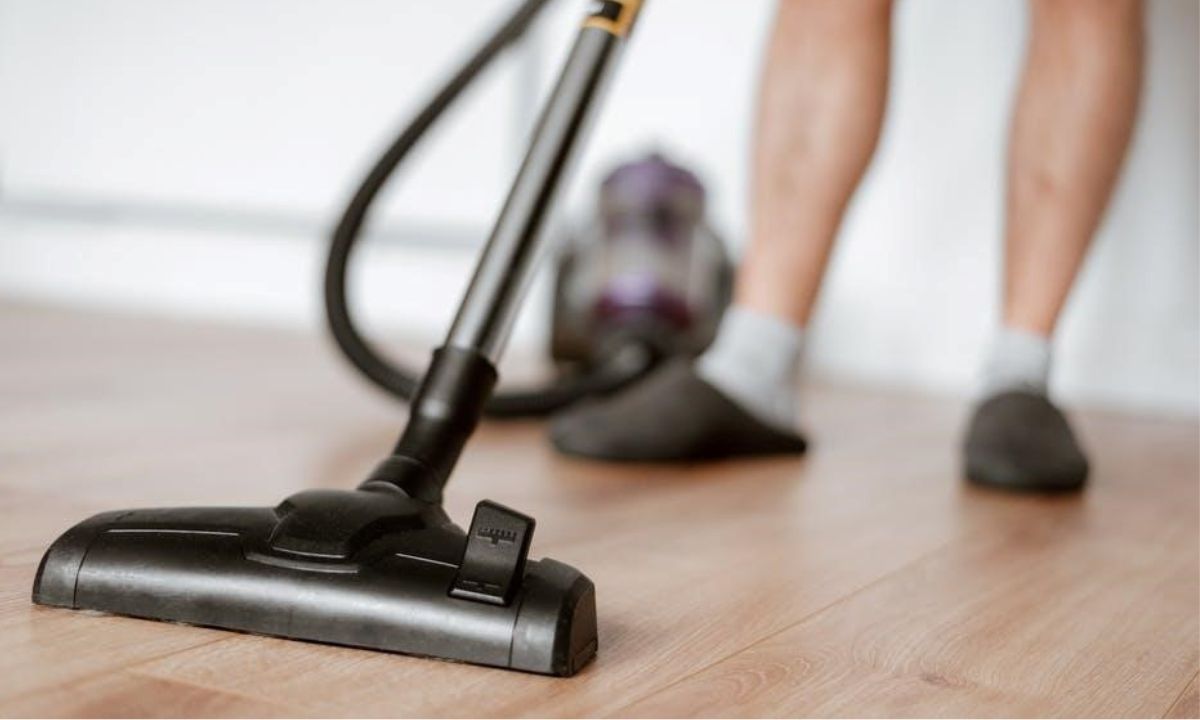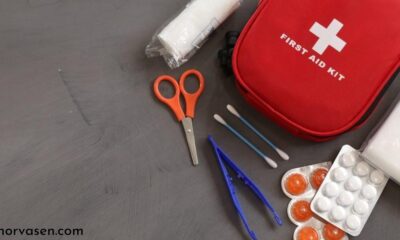Home Improvement
6 Tips for a Successful Roofing Repair Project

A well-maintained roof is crucial for the longevity and safety of any home. Roofing repair projects can be daunting, but with careful planning and the right approach, they can be successfully completed, ensuring the durability and reliability of your roof. Here are some essential tips to guide you through a successful roofing repair project.
Assessing the Damage and Planning Accordingly
Before embarking on any roofing repair project, it’s imperative to conduct a thorough assessment of the damage. This involves a detailed inspection of the roof to identify the extent and nature of the damage. Look for signs such as missing or broken shingles, water stains on the ceiling, and any visible leaks. Utilizing a professional roofing contractor for this initial assessment can provide a more accurate diagnosis and help in formulating an effective repair plan. Once the damage has been assessed, create a detailed plan outlining the scope of the repairs, the materials needed, and a realistic timeline for completion. This planning stage is crucial for preventing unexpected issues and ensuring that the project runs smoothly.
Choosing the Right Materials and Tools
The success of a roofing repair project heavily depends on the quality of materials and tools used. Selecting the right materials that match your existing roof is essential for maintaining its structural integrity and aesthetic appeal. For example, if your roof is made of asphalt shingles, ensure that the replacement shingles are of the same type and quality. Additionally, using high-quality roofing nails, sealants, and underlayment can significantly enhance the durability of the repairs. Equipping yourself with the right tools is equally important. Basic tools such as a hammer, roofing nails, a pry bar, and a utility knife are essential. For more complex repairs, consider investing in specialized tools like a roofing nailer or a shingle cutter. Having the right materials and tools on hand will not only make the repair process more efficient but also ensure a higher standard of workmanship.
Contacting Professional Roofing Contractors
When tackling complex roofing issues or if you prefer to avoid the DIY route, contacting professional roofing contractors is highly recommended. Experienced contractors, particularly those specialized in Sarasota roof repairs or roofing in any other place, offer invaluable expertise and efficiency. They can accurately diagnose roofing problems, provide detailed repair estimates, and execute repairs with precision using industry-standard practices. Moreover, reputable roofing contractors often offer warranties on their work, ensuring peace of mind regarding the longevity and quality of the repairs. By choosing professional assistance, homeowners can navigate roofing repair challenges seamlessly, ensuring their roof remains robust and resilient against the elements for years to come.
Considering Local Climate and Regulations
When undertaking roofing repairs, it’s essential to consider the local climate and regulations that may impact the project. Different regions have varying weather conditions that can affect the choice of materials and the timing of repairs. For instance, in areas prone to heavy rainfall or hurricanes, roof repairs must account for moisture resistance and wind durability. Additionally, local building codes and regulations often dictate specific requirements for roofing materials and installation practices to ensure safety and compliance. Before starting your roofing repair project, research the local climate conditions and regulatory guidelines to make informed decisions that will enhance the longevity and effectiveness of your repairs. Adhering to these considerations will help in creating a resilient roof that can withstand local environmental challenges, ensuring your home remains protected for years to come.
Budgeting and Cost Management
A critical aspect of any roofing repair project is effective budgeting and cost management. Start by obtaining multiple quotes from reputable roofing contractors to get an accurate estimate of the repair costs. This will help you compare prices and choose a contractor who offers a balance between cost and quality. It’s also essential to factor in potential additional expenses such as unforeseen damage or necessary upgrades to meet current building codes. Creating a detailed budget that includes all anticipated costs will prevent financial surprises and ensure the project remains within your financial means. Additionally, setting aside a contingency fund can provide a buffer for any unexpected expenses that may arise during the repair process. Effective cost management not only keeps your project on track but also ensures that you achieve the best possible results without compromising on quality.

Regular Maintenance and Inspection
Once your roofing repair project is completed, regular maintenance and inspection are crucial for prolonging the life of your roof. Schedule periodic inspections, especially after severe weather events, to check for any new damage or wear and tear. Regular maintenance activities, such as cleaning gutters, removing debris, and trimming overhanging branches, can prevent minor issues from escalating into significant problems. Establishing a routine maintenance plan with a professional roofing contractor can provide ongoing peace of mind, ensuring that any issues are promptly addressed before they compromise the integrity of your roof. In areas like Sarasota, where roof repairs or roofing in any other place with similar climates are subject to harsh weather conditions, diligent maintenance is particularly important. Consistent upkeep will not only extend the lifespan of your roof but also protect your home from potential water damage and structural issues.
A successful roofing repair project requires thorough assessment, careful planning, and attention to detail. By considering local climate conditions, budgeting effectively, and maintaining regular inspections, you can ensure that your roof remains in excellent condition for years to come. When dealing with roof repairs following these tips will help you achieve durable, high-quality results that enhance the safety and value of your home.
Home Improvement
The Benefits of Choosing Mobile Dream Home Plans for Modern Living

In today’s fast-paced world, the concept of home has evolved significantly. Many people are seeking innovative ways to live that offer flexibility, sustainability, and affordability.
This is where mobile dream home plans come into play. These homes promise a lifestyle that adapts to your needs without compromising on comfort or style.
In this blog post, we’ll explore the various benefits of choosing mobile dream home plans for modern living. So, if you are curious about how this lifestyle choice can enhance your life, read on!
Let’s begin!
Affordability
Mobile dream home plans offer a cost-effective alternative to traditional housing. They allow you to save money in the long run. With a mobile dream home, there’s no need for expensive land purchases or construction costs.
Plus, they require fewer resources and maintenance expenses. This is because these affordable housing are typically smaller in size.
Furthermore, due to their mobility, you have the flexibility to move your home whenever needed. This can be made possible without the burden of additional relocation costs.
This makes it an ideal option for those who want a change of scenery. It’s also best for those who need to relocate frequently for work. Whether one wishes to purchase a mobile home in Lake County or anywhere else, it offers a more budget-friendly housing option.
Flexibility
Another significant advantage of mobile dream home plans is flexibility. These homes are designed to be easily transportable and customizable. This allows you to adapt your living space according to your needs.
It’s all possible with a mobile dream home. This is whether you want to:
- add an extra room
- expand the kitchen
- change the layout of your home
Moreover, these homes offer the option of off-grid living. They give you the freedom to live in remote locations without sacrificing modern conveniences. This flexibility allows for a more personalized and sustainable way of living.
Sustainability
Speaking of sustainability, mobile dream homes are an eco-friendly housing option. These homes minimize waste during construction as they often use recycled materials and have a smaller carbon footprint due to their size. Since they can also operate off-grid, they rely less on traditional energy sources and reduce your utility bills.
Furthermore, by choosing a mobile dream home, you are also contributing to reducing the demand for new land development and preserving natural resources. This makes it a responsible choice for those looking to live a more environmentally conscious lifestyle.
Those who are going for sustainable living can also incorporate eco-friendly practices such as rainwater harvesting, solar panels, and composting into their mobile dream home.
Consider Choosing Mobile Dream Home Plans for Modern Living
Mobile dream home plans offer a unique and modern way of living that caters to the needs and preferences of individuals in today’s society. These homes provide an attractive alternative to traditional housing options.
So, if you’re looking for a lifestyle that offers more freedom and versatility while also being environmentally friendly, consider choosing a mobile dream home for your next move. Experience the benefits for yourself and start living the dream!
Should you wish to explore more reads, head to our blog page. We’ve got more!
Home Improvement
Comparative Analysis: What Makes Different Types of Gutter Elbows Unique?

Are you aware of the crucial role gutter elbows play in your home’s drainage system?
Knowing the types of gutter elbows can improve your home’s rainwater management. These often-missed parts are crucial. They direct rainwater away, preventing damage.
Picture a drainage system that prevents rainwater leaks and erosion in your home. By selecting the right gutter elbows for your needs, you can significantly boost your system’s efficiency and lifespan.
Ready to optimize your home’s drainage system? Let’s dive into the various types of gutter elbows and discover how they can make a difference in your gutter installation.
The Importance of Gutter Elbows
Gutter elbows redirect water from horizontal to vertical downspouts. They help manage rainwater, preventing overflow and pooling around your home. Also, it’s vital to maintain them to avoid leaks and clogs.
Types of Gutter Elbows
The types of gutter elbows vary widely, with each designed for specific uses. Here’s a closer look at some popular options:
Standard Elbows
Standard elbows, made from aluminum or vinyl, are best for most homes. They come in various angles such as 45 or 90 degrees, allowing for flexible installations.
Downspout Elbows
These elbows connect the gutter system to the downspout. They direct water to ensure proper drainage. They often feature a long curve that reduces water turbulence.
Adjustable Elbows
These adaptable parts can be adjusted on-site to meet specific needs, easing installations in small areas. They are perfect for custom gutters and can often rotate completely.
Offset Elbows
Offset elbows help gutters move around things like windows or doors. This makes it easier for them to work properly and keep everything flowing smoothly.
Benefits of Different Elbow Types
Each elbow type improves your home’s drainage in unique ways. Standard elbows are affordable and simple to install. Downspout elbows prevent water backflow. Meanwhile, adjustable elbows are perfect for uneven roofs.
Choosing the right elbow reduces gutter upkeep. It prevents debris buildup and directs water efficiently. Well-managed gutters lower the risk of rain damage.
Impact on Gutter Installation
Choosing the right gutter elbow affects the whole gutter setup. Standard methods might fall short if specific needs aren’t met. So, knowing the types of elbows helps homeowners and contractors make better choices for their properties.
Also, picking high-quality elbows ensures they last longer and reduces repair needs. Investing in better options saves money in the long run by avoiding frequent replacements and repairs.
Choosing the Right Gutter Elbow for Your Home
When selecting a gutter elbow, consider factors such as the home’s roofline, rainfall patterns, and whether you require additional flexibility. Consulting a professional for installation or gutter repair in Knoxville, TN for instance is beneficial, especially for homeowners unfamiliar with the various types of gutter elbows and their applications.
Incorporating these elements into your gutter system can optimize performance and safeguard your property against water damage. With the right elbow in place, you can significantly improve rainwater management and extend the lifespan of your gutter system.
Conclusion: Enhance Your Gutter System Today
Understanding the features and benefits of the types of gutter elbows is crucial for improving your home’s drainage solution. The right components can improve your gutter installation and reduce maintenance.
A well-designed gutter system protects your home from water damage boosting its curb appeal. If you need help with your home’s drainage, contact experts today.
Looking for more insights? Explore our blog for articles on a range of topics!
Home Improvement
Top 7 Key Components of a Successful Cleaning Business Plan

A solid cleaning business plan is a must for any cleaning company, whether you’re just starting or aiming to grow your existing business. Think of it as your roadmap-guiding your steps and helping you reach your goals. A great plan can even attract investors, secure funding, and help you partner with other businesses.
In this article, we’ll dive into the top 7 key components of a winning cleaning business plan that will set you up for success in the competitive cleaning world! Let’s get started!
Executive Summary
The executive summary is usually the first part of a business plan, but it’s best to write it last. This section gives an overview of your entire cleaning business plan.
It highlights the main points and helps readers understand what they will find in the rest of the document. An effective executive summary should be clear and interesting, making readers want to keep going.
It’s important to include key details and a strong reason for them to read on. Thus, ensuring they grasp the essence of your plan right from the start.
Market Analysis
A detailed market analysis is key to knowing your target audience, competitors, and industry trends. It includes looking into the demand for different types of cleaning services in your area, finding potential customers and their needs, and studying your competitors’ strengths and weaknesses. This info will help you figure out your unique selling points and create effective marketing strategies.
Services and Pricing
It is important to clearly define the services you provide and their costs in a cleaning business plan. Your services should meet market demand, the needs of your target audience, and what your company can do. Think about pricing strategies like competitive pricing or value-based pricing to make sure you stay profitable while being competitive.
Marketing Strategy
A marketing strategy shows how you will reach and attract customers. It should include details about your target audience, messaging, advertising channels, and budget. Your marketing strategy must match your business goals and make your brand stand out from competitors.
Operations Plan
The operations plan shows how your house cleaning business runs every day. It should include details about staff, equipment, supplies, daily tasks, and quality checks. A clear operations plan helps your business run smoothly and keeps service consistent.
Financial Projections
Financial projections are key to showing how profitable and sustainable your cleaning business can be. They should cover startup costs, expected income, balance sheets, and cash flow statements. These projections help you check if your business plan is financially sound and highlight any necessary changes.
Continuous Improvement Plans
To assess and improve your cleaning business services regularly, set clear goals for customer satisfaction and employee performance. This can help you stay competitive. Look into ideas from industry experts like Debbie Sardone Consulting to boost your strategies and make sure your growth is sustainable.
Build a Successful Cleaning Business Plan with this Guide
A good cleaning business plan is important for success in the competitive cleaning industry. It helps you make smart choices, attract investors, and grow your business. Don’t forget to check and update your plan as your business changes. Start on your cleaning business plan today and watch your business grow! Happy cleaning!
Is this article helpful? Keep reading our blog for more.
-

 Business5 months ago
Business5 months agoExploring the Rental Market: Properties for Rent in Malta
-

 How-To Guides5 months ago
How-To Guides5 months agoComprehensive Guide to Cockwarming: Enhancing Intimacy and Connection
-

 Home Improvement6 months ago
Home Improvement6 months agoEco-Friendly Round Rug Options for Sustainable Living in NZ
-

 Apps and Games6 months ago
Apps and Games6 months agoDiscover Tickzoo: The Ultimate Platform for Video Content Lovers and Creators
-

 Fashion6 months ago
Fashion6 months agoBlack Magic: The Elegance and Sophistication of Ultimate Homecoming Dresses in Black
-

 Tech8 months ago
Tech8 months agoExploring the Features of Innocams: The Future of Security
-

 Business8 months ago
Business8 months agoUnlock Potential: Explore Pikruos Services
-

 Health6 months ago
Health6 months agoSports First Aid Kits: Must-Have Items for Athletes and Their Coaches








